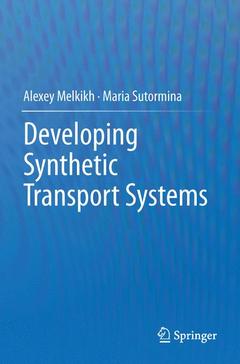Developing Synthetic Transport Systems, 2013
Auteurs : Melkikh Alexey, Sutormina Maria

Furthers the reader's understanding of the problems associated with developing artificial cells
Optimizing systems for minimal cells
Developing synthetic transport systems
Includes supplementary material: sn.pub/extras
Date de parution : 02-2013
Ouvrage de 199 p.
15.5x23.5 cm
Disponible chez l'éditeur (délai d'approvisionnement : 15 jours).
Prix indicatif 52,74 €
Ajouter au panierThème de Developing Synthetic Transport Systems :
Mots-clés :
Game theory; Ion transport; Linear programming; Minimal Cell; Systems Biology



